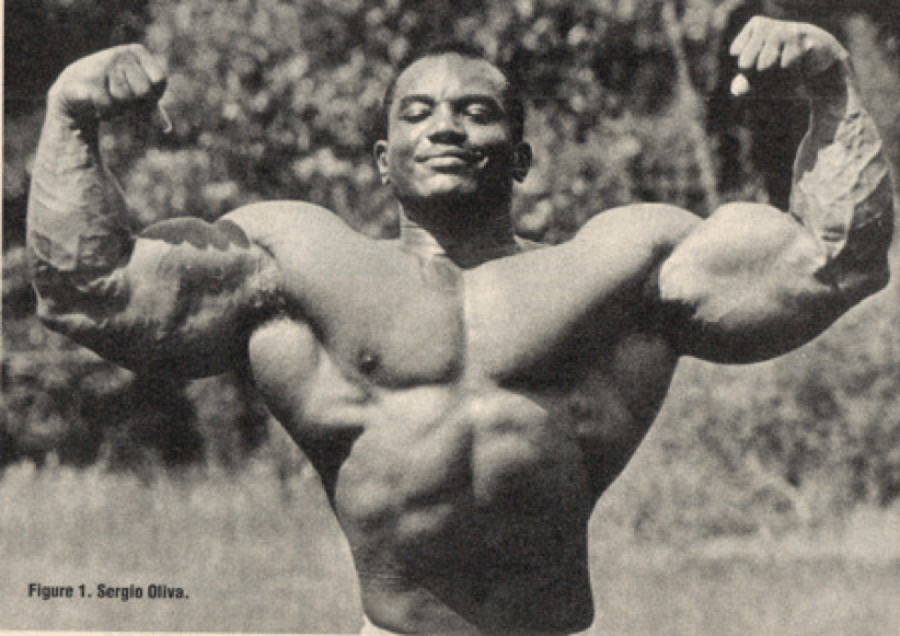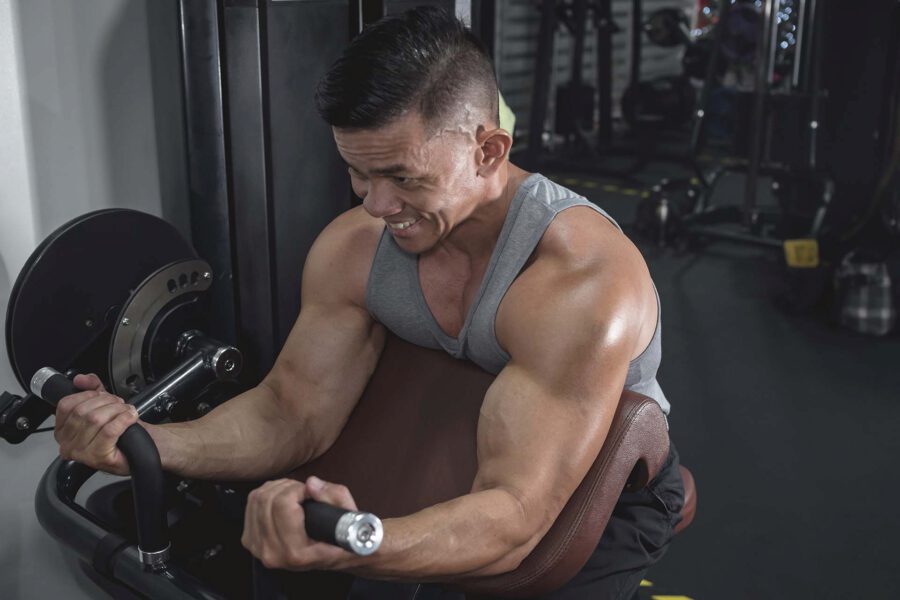Can You Change the Shape of Your Muscles?
A lot of people expend a lot of time and energy in the gym trying to change the shape of their muscles. This is distinct from making the muscle bigger.
The shape of a muscle refers to the muscle length, thickness and height. Take a look at the two biceps below …
Arnold’s biceps had a naturally peaked shape, while Sergio Oliva’s were broader and thicker but not as high.
Believing they can change the shape, people perform preacher curls to develop their biceps peak, overhead triceps extensions to bring out the long head of their triceps and leg extensions with the toes pointed to focus on the ‘teardrop’ part of their quadriceps. This belief that you can do specific exercises to reshape your muscles has existed for decades. But is it a real thing? Let’s investigate.
We can think of a muscle as being similar to a rope. When you tie a rope to a solid object, like a tree, and then pull on it, the rope will be taut through every strand. It is impossible for a part of the rope to be slack while another part is taut; it’s all or nothing.
Our muscles are no different. When we do an exercise that extends the muscle through its range of motion, all of the fibers are activated. That is true even though both ends of the muscle are moving, unlike the tree and rope illustration. We can see this by extending the rope illustration to a tug of war competition.
Regardless of who is winning the competition, the rope will have the same tensions throughout its entire length; there will be no slack strands. This illustrates the all or nothing principle of muscle activation. It is impossible to pull on a rope in such a way that there is more tension on one end and less tension on the other end. Increased or decreased force increases or decreases the force through the entire rope.You cannot isolate a part of it.
The bottom line here is that when a muscle is required to contract against a weight, the muscle tension will be evenly distributed across all of the muscle fibers, all the way from the origin point to the insertion.
Let’s now consider some specific body parts that people often train to hit different portions of the muscle.
The pectoral muscle fibers run from the center of the chest to the top of the humerus (upper arm bone. The humerus bone pulls those fibers toward the sternum just the same way that you would pull on a rope, so that every fiber achieves the same level of tautness.
Many people believe that when you do a dumbbell press you are working the ‘inner’ part of the pecs, while a dumbbell flye will work the outer portion of the muscle. The difference between the two exercises is the degree to which the elbow is bent, Yet, regardless of whether the elbow is bent more or bent less, the humerus will pull the pec muscle toward the sternum in exactly the same way. The muscle doesn’t know what position the elbow is in; all it knows is how heavy the load is that it has to move.
The difference between the two exercises is that the length of the operating levers (the upper arm, which is the primary level, and the lower arm, which the secondary lever), changes, That is why you cannot use as much weight on the flye movement. However, the pec fibers are contracting the same way in both exercises. That is because you cannot isolate the inner or outer pecs, no matter what exercise you do. There is some evidence, however, that the stretch that you can achieve with flyes can have a fascia stretching effect, increasing muscle growth potential.
Here’s a workout you should try:
It is widely believed that you can do exercises to isolate your upper and lower abdominals. You cannot. The abs are one muscle, made up of a single sheet that originates at the pubic bone of the pelvis and attaches on the frontal part of the flower ribs.When you contract your abs, you are pulling the front of the ribs toward the pelvis, or vice versa. Just like in the tug of war example cited earlier, the muscle has even tension throughout its entire length.
The job of the rectus abdominis muscle is to produce spinal flexion. For that to happen the entire muscle has to contract. So, regardless of what you may have read or been told, it is scientifically and biomechanically impossible to isolate the upper or lower abs.
The first Mr Olympia, Larry Scott, was famous for the fullness of his biceps. He was often asked what his favorite exercise was and he would always answer that it was the preacher curl. It was assumed, though Scott never directly said as much, that this exercise was responsible for the fullness and peak of his biceps.
Half a century later millions of people are still doing preacher curls to build their biceps peak. The reality is, though, that there was only one thing that determined the shape of Larry Scott’s biceps - his genetics. A lot of hard work created the size of his upper arms, but their shape was predetermined at birth. So are yours.
Once again, the all or nothing principle comes into play here. It is impossible to create more tension on any part of the biceps muscle fibers that is greater or less than on any other part. Preacher curls have a different resistance curve than standard curls, being greater at the beginning and lesser at the end of the range of movement. That makes the exercise harder in the beginning and easier at the end. But it does nothing to change the shape of the muscle. Nor does any other exercise.
The idea that you can change the shape of a muscle is a myth that should have been buried a long time ago. Your muscle shape is part of your genetic blueprint, You have the ability to make your muscles bigger and that’s it. Trying to do anything else is, ultimately, going to be an exercise in futility.






